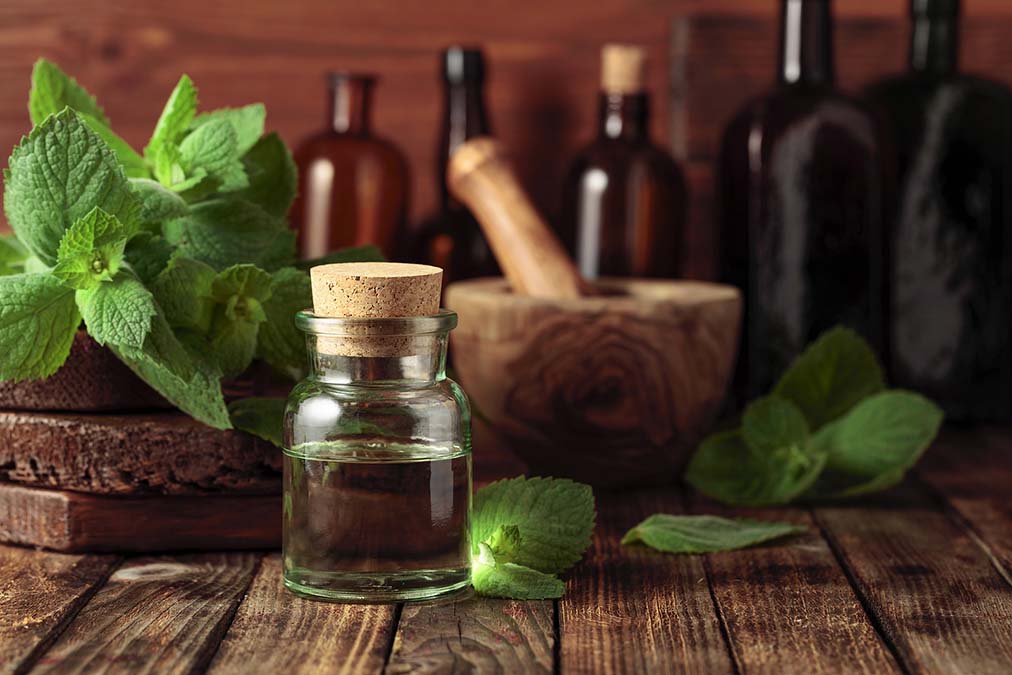 Hundreds of studies have proven the effectiveness of essential oils in fighting nail fungus. They have been found to be more effective than medicine at removing fungus, and the results are longer lasting or permanent.
Hundreds of studies have proven the effectiveness of essential oils in fighting nail fungus. They have been found to be more effective than medicine at removing fungus, and the results are longer lasting or permanent.
But which essential oil should you use (and how)?
The authors of a new study published in Estima—Brazilian Journal of Enterostomal Therapy found 13 studies that compare different essential oils to each other, compare essential oils to pharmaceutical antifungal drugs, or test the ability of various oils to kill fungi on cut pieces of nail in the laboratory.
The oils that they found to be most effective against the species that cause nail fungal infections were melaleuca alternifolia, lavandula angustifolia, eucalyptus citriodora, foeniculum vulgare, menthol, and thymol.
Unless you are a serious essential oil buff, much of this would have gone over your head, so let’s look at them one by one.
- 1. Melaleuca alternifolia is tea tree oil. It contains the chemical terpinen-4-ol, which has long been known to have a strong antibacterial and antifungal effect.
2. Lavandula angustifolia is lavender essential oil, so if you do not mind your hands and feet smelling like your granny, apply it generously—it’s track record as an antifungal oil is long and lustrous.
3. Eucalyptus citriodora is not normal eucalyptus, but rather lemon eucalyptus oil. The same chemical that kills the fungi is also believed to repel mosquitoes for a double whammy benefit.
4. Foeniculum vulgare is fennel oil, which also has a long research history for its antimicrobial properties.
5. Menthol is peppermint oil. It is not coincidental that so many gums and toothpastes contain it.
6. Thymol, or good old thyme oil, is commonly used as a preservative in foods, precisely because of its antimicrobial effects.
The studies these researchers surveyed recommended around five milligrams of oil per one milliliter of carrier substance. That formula is almost impossible to calculate or work with, since few of us have the resources to work with tiny milligrams of oil.
The better way to go is to use one drop of essential oil for every nine drops of carrier oil. If you see no signs of an allergic reaction after a week, increase it to two drops, but no more.
Apricot kernel, coconut, jojoba, olive, and sweet almond oils are all great carrier oils.

 Overcoming IBD
Overcoming IBD Multiple Sclerosis
Multiple Sclerosis Banishing Bronchitis
Banishing Bronchitis Gum Disease Gone
Gum Disease Gone Overcoming Onychomycosis
Overcoming Onychomycosis Neuropathy No More
Neuropathy No More The Prostate Protocol
The Prostate Protocol Brain Booster
Brain Booster
 Ironbound
Ironbound
 Solution for Shingles
Solution for Shingles
 The Bone Density Solution
The Bone Density Solution
 The Ultimate Healing Protocol
The Ultimate Healing Protocol
 The Parkinson's Protocol
The Parkinson's Protocol
 The Chronic Kidney Disease Solution
The Chronic Kidney Disease Solution
 Overthrowing Anxiety
Overthrowing Anxiety The Fatty Liver Solution
The Fatty Liver Solution The Hypothyroidism Solution
The Hypothyroidism Solution
 The End of Gout
The End of Gout The Blood Pressure Program
The Blood Pressure Program
 The Oxigized Cholesterol Strategy
The Oxigized Cholesterol Strategy
 Stop Snoring And Sleep Apnea Program
Stop Snoring And Sleep Apnea Program
 The Arthritis Strategy
The Arthritis Strategy The Vertigo & Dizziness Program
The Vertigo & Dizziness Program The 3-Step Diabetes Strategy
The 3-Step Diabetes Strategy Hemorrhoids Healing Protocol
Hemorrhoids Healing Protocol The Erectile Dysfunction Master
The Erectile Dysfunction Master Weight Loss Breeze
Weight Loss Breeze The IBS Program
The IBS Program The Insomnia Program
The Insomnia Program The Migraine and Headache Program
The Migraine and Headache Program The Neck Pain Solution
The Neck Pain Solution The Menopause Solution
The Menopause Solution The Ejaculation Master
The Ejaculation Master The TMJ Solution
The TMJ Solution The Acid Reflux Solution
The Acid Reflux Solution The Fibromyalgia Solution
The Fibromyalgia Solution The Psoriasis Strategy
The Psoriasis Strategy